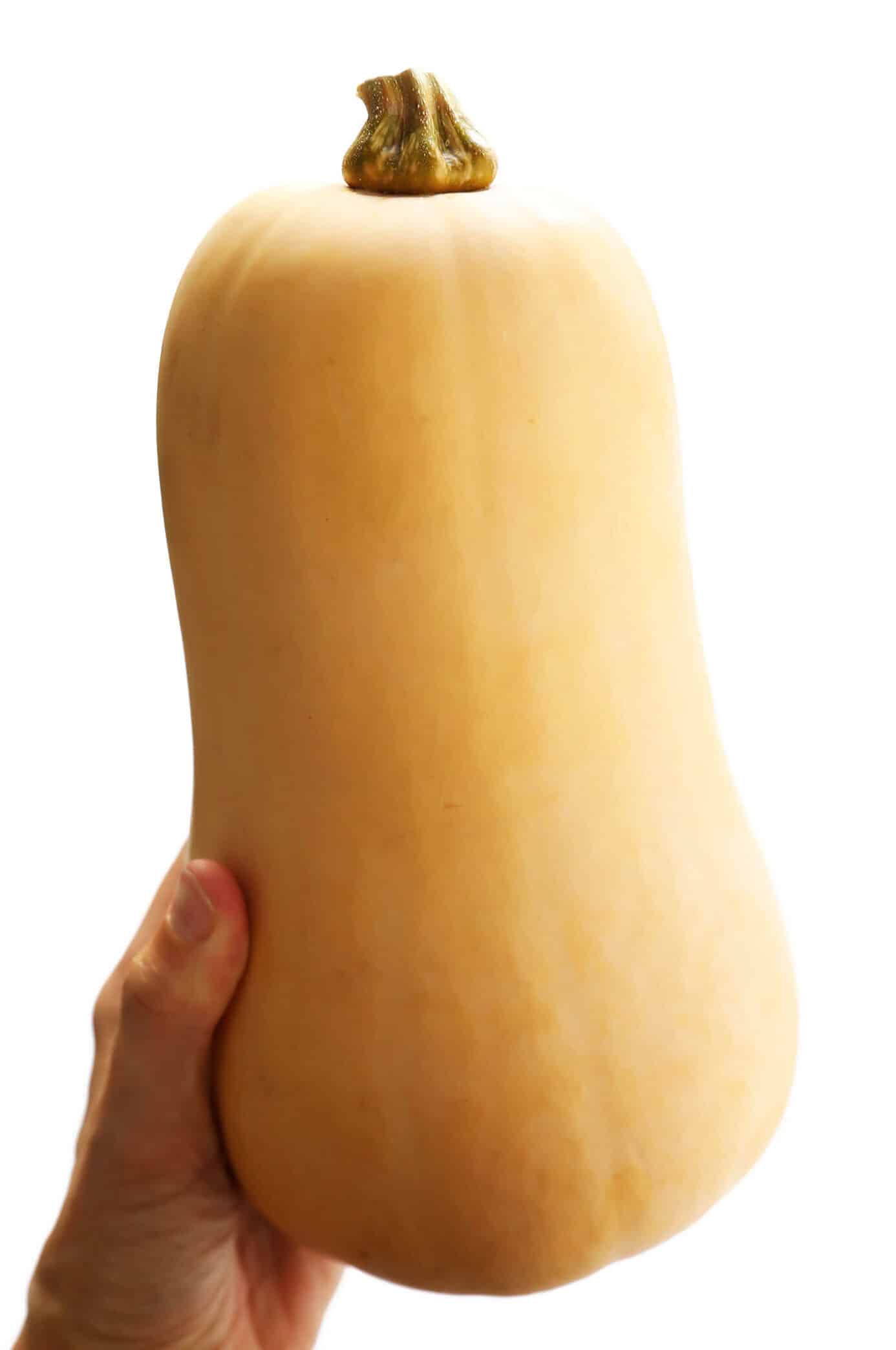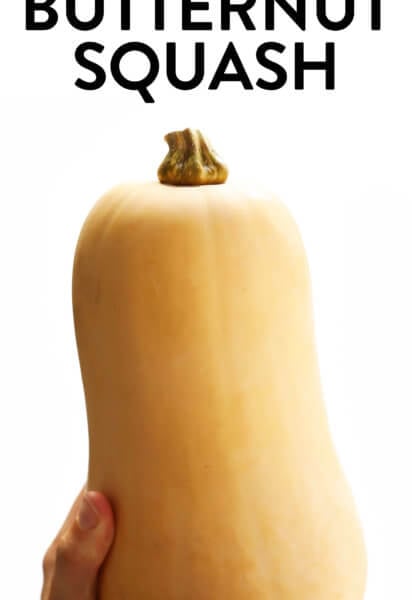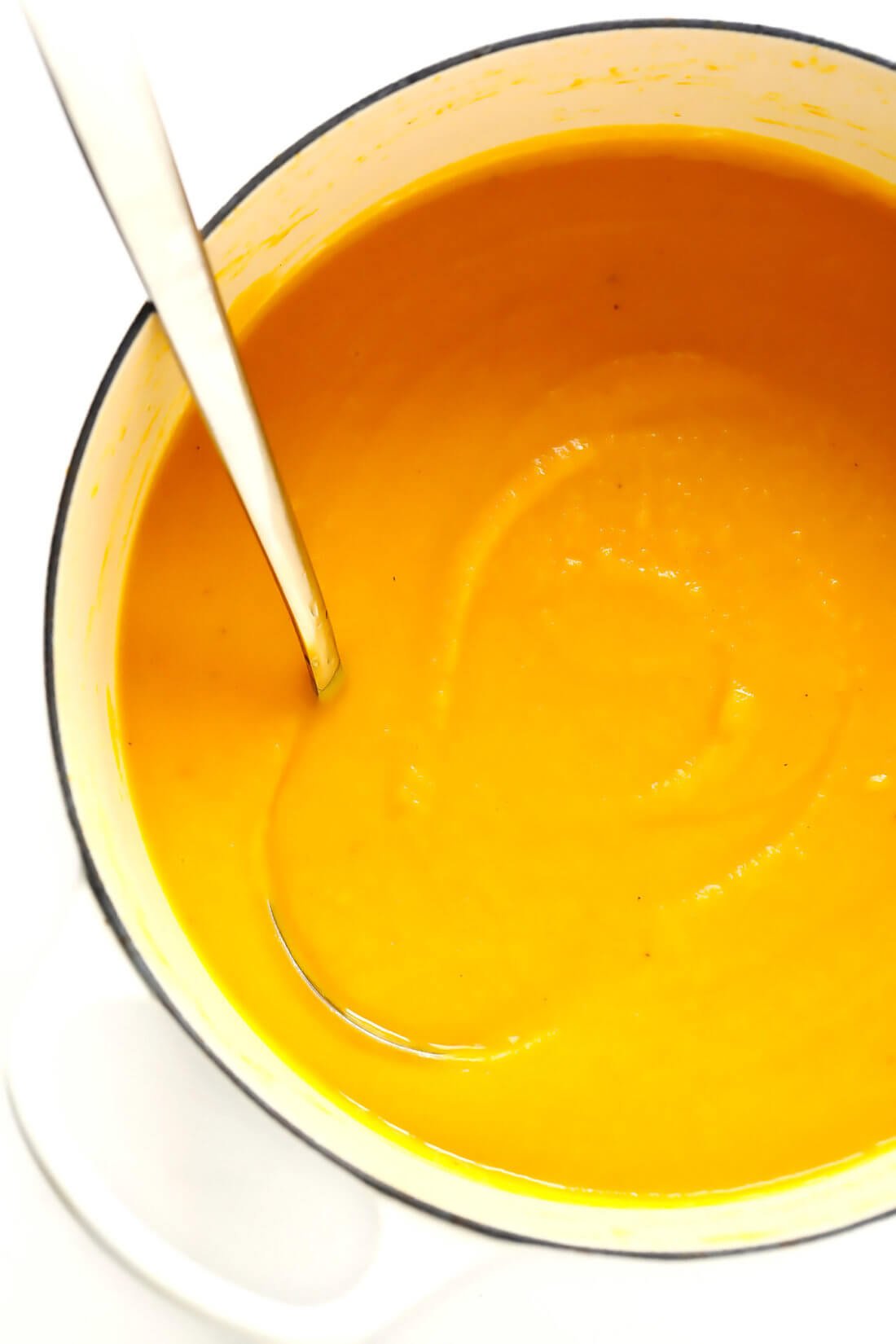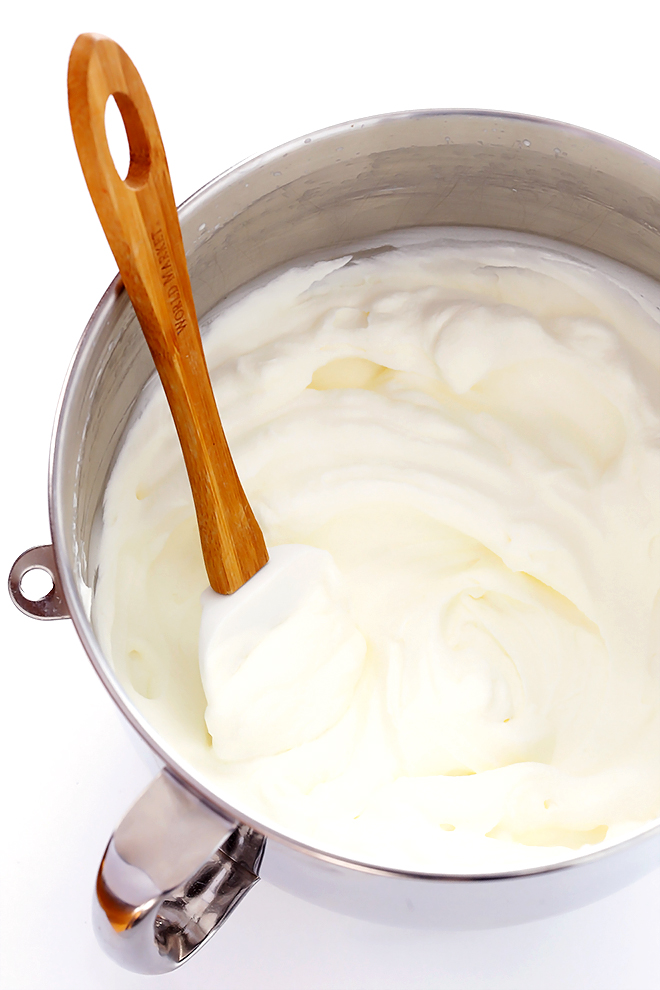Learn how to cut a butternut squash safely with this step-by-step tutorial (video included).

It’s butternut squash season again!
And because I care about us and our sanity and the preservation of all ten of our precious fingers, I thought we could all use a quick refresher this season on how to cut butternut squash…the safe way. ♡
Because let’s be real, as delicious as butternut squash may be, it is approximately zero fun to cut and peel. And if done the wrong way, it can put the safety of those fingers holding the squash in serious jeopardy. But if done the right way, I promise that you can peel and cut butternut squash much more easily, quickly and safely. And before you know it, you will be cooking it up in no time.
So let’s get to it! Here are my best tips for how to select, cut, peel, cook and store butternut squash!
How to Cut Butternut Squash | 1-Minute Video
How To Select A Ripe Butternut Squash:
When shopping for a ripe butternut squash, in general you want to look for a squash that is…
- darker in color: the darker the shade of beige, the better
- no green patches: look for a squash that is uniformly beige, free of cuts and blemishes
- matte: the skin should be more matte (versus shiny)
- heavy for its size: choose the squash that feels like it weighs the most for its size
- sounds hollow: if you give the squash a tap, it should sound hollow inside
How To Soften Butternut Squash Skin:
The skin on butternut squash is notoriously tough and difficult to peel. So if you would like to soften the skin a bit before peeling your butternut squash, just use a fork or paring knife to poke holes all over the skin of the squash. Then pop it in the microwave for 2 minutes, remove, and proceed onward with peeling the squash.
How To Peel Butternut Squash:
I highly recommend using a good-quality sharp peeler to peel butternut squash. I prefer using a Y peeler, but a swivel peeler would also work. That said, if you do not own a peeler, you can halve the squash horizontally (see photos below), place the cut side down on a flat surface, and then use a knife to vertically slice off the peel.
How To Cook Butternut Squash:
There are actually lots of great options for how to cook butternut squash, such as…
- Roasted butternut squash: I will be actually sharing my best tips and recipe tomorrow for how to roast butternut squash in the oven — stay tuned!
- Baked butternut squash: If you do not want to roast butternut squash at high heat (which tends to make the edges of the squash slightly browned and crispy), you can bake butternut squash instead, which simply means at cooking it at lower heat for a bit longer. When making baked butternut squash — either halved, or chopped into cubes — I recommend cooking it at 350°F until the squash is tender. Cooking time will depend on the size of your butternut squash pieces.
- Slow cooker butternut squash: Place the whole (uncut) squash in a large slow cooker. Slow cook on high for 3-4 hours, or on low for 6-8 hours, until the squash is tender and cooked through.
- Instant pot butternut squash: Place the steamer basket in the bottom of your pressure cooker. Slice the butternut squash in half lengthwise, then place the halves side by side in the pressure cooker, and pour in 1 cup of water. Cook on high pressure (manual mode) for 12 minutes, followed by a 10-minute natural release, followed by a quick release.
- Sautéed butternut squash: Cut the squash into 1/2-inch cubes. Heat 2 tablespoons oil in a large sauté pan over medium heat. Add the squash and sauté for 10-15 minutes, stirring occasionally, until tender.
How To Store Butternut Squash:
Fresh (whole) butternut squash should be stored in a cool, dark place in order to prevent ripening. Depending on its ripeness when purchased, fresh butternut squash should last for 1-3 months.
Uncooked (diced) butternut squash can be refrigerated in a sealed container for up to 3 days. Or to freeze diced uncooked butternut squash, spread it out on a parchment-covered baking sheet in an even layer (no overlapping). Then freeze on the baking sheet for 3-4 hours, or until frozen. Remove the baking sheet, and transfer the diced squash into a freezer bag or storage container, then freeze for up to 3 months.
Cooked (diced or mashed) butternut squash can be refrigerated in a sealed container for up to 3 days. Or to freeze diced cooked butternut squash, spread it out on a parchment-covered baking sheet in an even layer (no overlapping). Then freeze on the baking sheet for 3-4 hours, or until frozen. Remove the baking sheet, and transfer the diced squash into a freezer bag or storage container, then freeze for up to 3 months.
Butternut Squash Recipes:
Looking for some butternut squash recipe inspiration? Here are some of my faves!
Description
Learn how to cut butternut squash (safely!) with this step-by-step tutorial and video.
Instructions
- Lay the butternut squash on its side on a large sturdy cutting board. Use a sharp chef’s knife to carefully slice off the top 1/2-inch (including the stem) of the squash, and discard. Repeat by slicing off the bottom 1/2-inch of the squash, and discard.
- Use a sharp vegetable peeler to peel all of the skin off of the squash, while carefully holding the squash with your other hand. Discard the peel.
- Once the entire squash has been peeled, lay the squash on its curvy side and slice it in half down the center (see photo example above). Then slice each piece in half down the center vertically, so that you now have 4 pieces of squash.
- Use a spoon to scoop out and discard the seeds and pulp. And now — your squash is ready to cut/dice however you’d like!
- To dice the butternut squash, place the flat sides of the squash against your cutting board, and then carefully cut it into your desired size/shape of pieces. Keep in mind that the smaller the pieces, the faster your squash will typically cook (especially if you are roasting or sautéing the squash). I typically cut mine into 1/2-inch or 3/4-inch cubes for roasting, but the size/shape of the cut is totally up to you.
- Once your butternut squash is cut, you can either cook the squash immediately. Or you can refrigerate it in a sealed container for up to 3 days, or freeze it in a sealed container for up to 3 months.
This post contains affiliate links.




